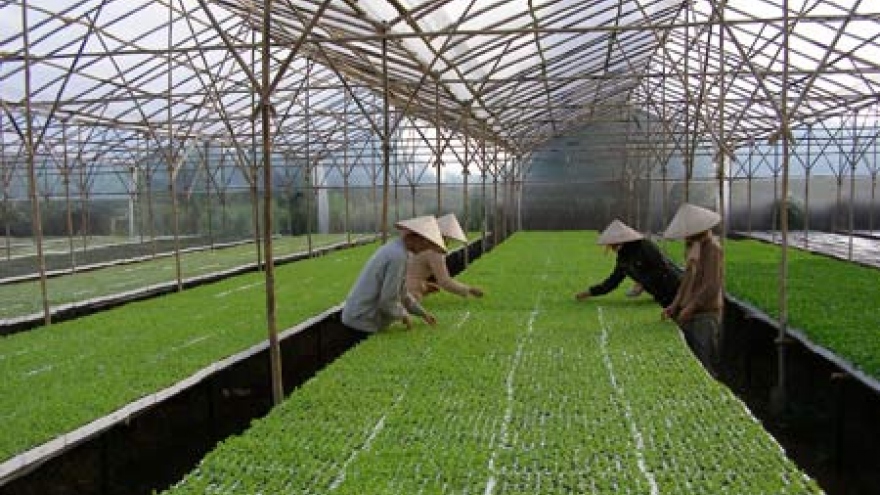Government paves the way for high-tech farming
VOV.VN - Overdependence on rice as the country’s most important single cash crop has created a sustainability issue for rice farmers, said speakers at a recent forum in Hanoi.
 |
The problem has been compounded by the erosion of fertile soil and the salinization of the Mekong Delta brought about by climate change the speakers told the audience.
And should the current trends remain constant, the arable land in Vietnam could decrease by as much as 3.2% by the end of the century, resulting in a decrease of 7.2 tons of rice per annum.
Rising sea levels due to climate change have led to more saltwater entering and flowing upstream in the Mekong Delta causing increased flooding that erodes the river banks and results in intensified salinization of farmland making it unsuitable for rice farming.
On a positive note, high-tech and climate-smart agriculture can mitigate this trend by formulating new farming techniques and better products more suitable for the changing environmental conditions, the speakers noted.
High-tech farming utilizes technology to produce more efficient, environmentally-friendly farming processes that result in better quality crops, compared to existing more traditional methods.
Effective high-tech farming introduces more cost-efficient operations for farmers and greatly enhance potential for higher top line sales and bottom line earnings because of improved quality of farm produce and consumer willingness to pay more for safer food.
Climate-smart agriculture, which is somewhat analogous to high-tech agriculture, presents innovative farming methods to cope with the negative aspects brought to the forefront by climate change.
Innovative farming, for example, would introduce hardier crops that could better withstand natural disasters and fluctuations in weather, quality of soil, and quantity of water in the Mekong Delta.
It would also involve better planning of crop production to avoid overproduction that would drive sales and earnings lower while at the same time maintaining sufficient output to provide for the country’s food security.
Also included under the category of innovative farming would be the introduction of a broader array of crops the country’s farmers produce to mitigate risks of overreliance on any one single item.
High tech farming tends to imply more sophisticated and technologically advanced farm machinery and equipment to more efficiently cultivate crops somewhat in line with traditional approaches but reducing costs of manpower by replacing it with machines.
Though the distinction between the two is often academic and often blurred because there is much overlap between the two concepts.
But whether it’s referred to as high-tech or climate smart agriculture— the bottom line problem comes down to finding the money to fund the cost of the long-term battle to combat the environmental impact of climate change.
The State Bank of Vietnam has recently announced it has established regulations to disburse a US$4.4 billion line of credit for high-tech and climate-smart agriculture to fund the initiative.
Under the initiative, Agribank, Vietcombank, and the Bank for Investment and Development of Vietnam will offer credit packages for these high-tech agriculture ventures.
The interest rates on these credit packages will bear interest at rates 0.5-1.5% lower than average rates for similar loans for other purposes. These credit packages will offer 6.5% interest rate for loans with a life of 12 months or less and 7.5% interest rates for loans that exceed 12 months.
The banks will also offer loans to farmers and other agriculture related businesses for equipment, technology, production, fertilizer, and pesticides, among other things.
Additionally, with the understanding that reversing climate change will not be immediate, the Ministry of Agriculture and Rural Development has recommended implementation of an action plan to run through 2020, with the goal of reducing greenhouse emissions by 20% every year.
From a policy perspective, however, it will take more than the government’s commitment to taking the helm to lay out the roadmap, fund and pave the way for high-tech agriculture to take root and grow in Vietnam.
To be successful, farmers need to seize the initiative to educate themselves about these innovative farming techniques, equipment, and products and adopt them as the new norm for Vietnam agriculture.



